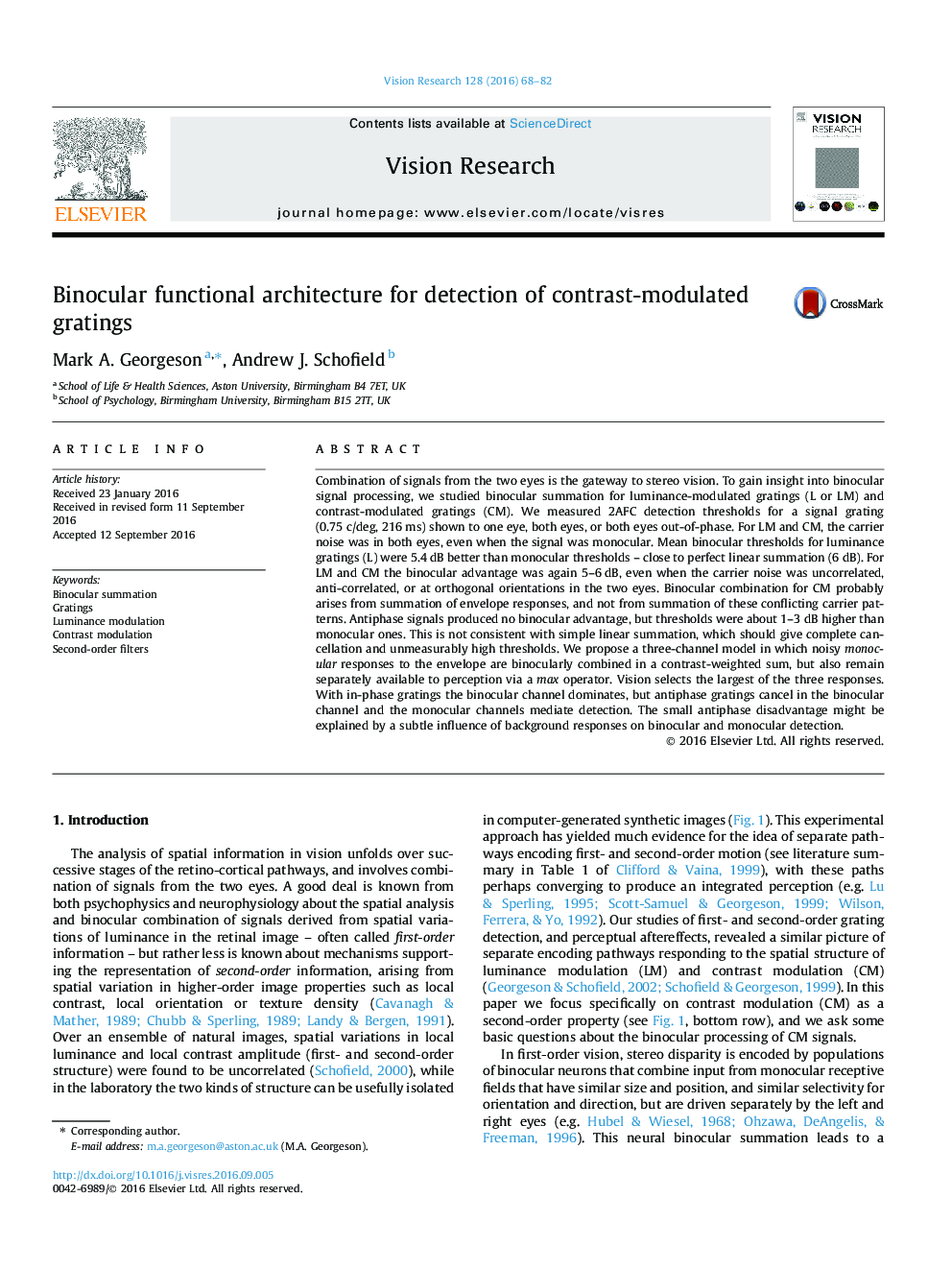| Article ID | Journal | Published Year | Pages | File Type |
|---|---|---|---|---|
| 8795407 | Vision Research | 2016 | 15 Pages |
Abstract
Combination of signals from the two eyes is the gateway to stereo vision. To gain insight into binocular signal processing, we studied binocular summation for luminance-modulated gratings (L or LM) and contrast-modulated gratings (CM). We measured 2AFC detection thresholds for a signal grating (0.75Â c/deg, 216Â ms) shown to one eye, both eyes, or both eyes out-of-phase. For LM and CM, the carrier noise was in both eyes, even when the signal was monocular. Mean binocular thresholds for luminance gratings (L) were 5.4Â dB better than monocular thresholds - close to perfect linear summation (6Â dB). For LM and CM the binocular advantage was again 5-6Â dB, even when the carrier noise was uncorrelated, anti-correlated, or at orthogonal orientations in the two eyes. Binocular combination for CM probably arises from summation of envelope responses, and not from summation of these conflicting carrier patterns. Antiphase signals produced no binocular advantage, but thresholds were about 1-3Â dB higher than monocular ones. This is not consistent with simple linear summation, which should give complete cancellation and unmeasurably high thresholds. We propose a three-channel model in which noisy monocular responses to the envelope are binocularly combined in a contrast-weighted sum, but also remain separately available to perception via a max operator. Vision selects the largest of the three responses. With in-phase gratings the binocular channel dominates, but antiphase gratings cancel in the binocular channel and the monocular channels mediate detection. The small antiphase disadvantage might be explained by a subtle influence of background responses on binocular and monocular detection.
Related Topics
Life Sciences
Neuroscience
Sensory Systems
Authors
Mark A. Georgeson, Andrew J. Schofield,
